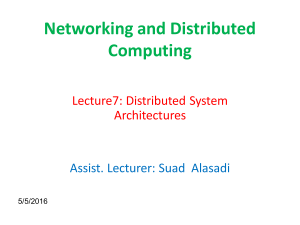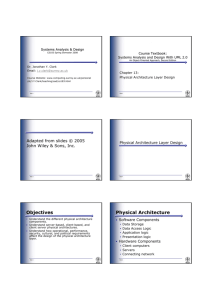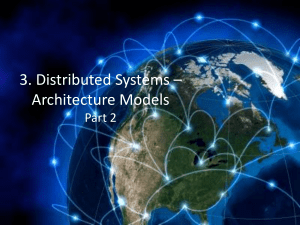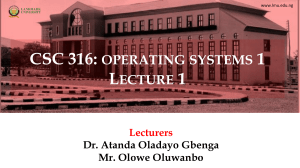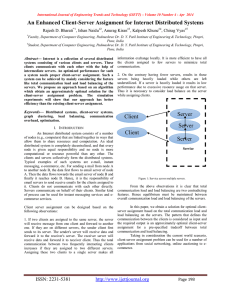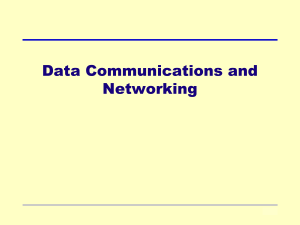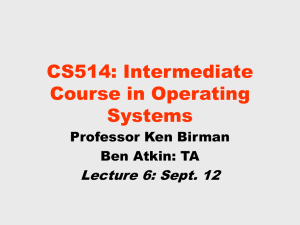Networking and Distributed Computing Lecture7: Distributed System
advertisement
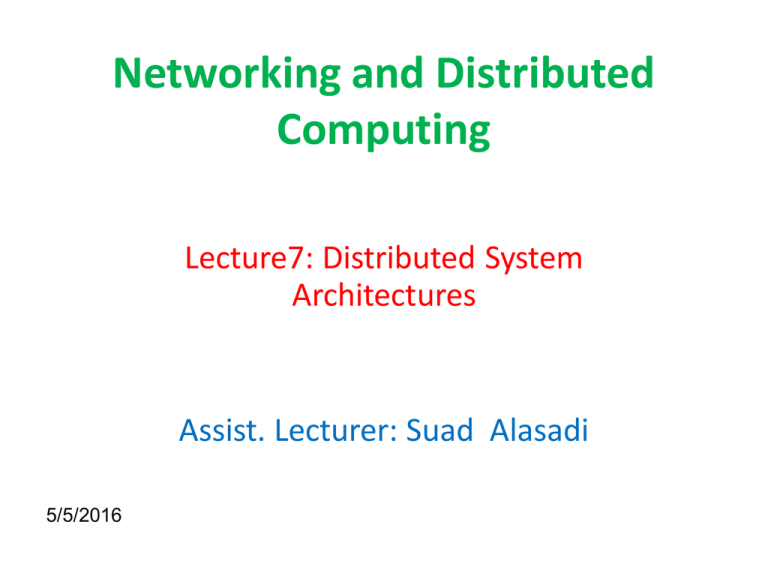
Networking and Distributed Computing Lecture7: Distributed System Architectures Assist. Lecturer: Suad Alasadi 5/5/2016 System Architectures • The architecture include: – The division of responsibilities between system components. – The placement of the components on computers in the network. • Client-server model: – Most important and most widely distributed system architecture. – Client and server roles are assigned and changeable. • Servers may in turn be clients of other servers. – Services may be implemented as several interacting processes in different host computers to provide a service to client processes: • Servers partition the set of objects on which the service is based and distribute them among themselves (e.g. Web data and web servers) Client-server model • Clients invoke individual servers Client invocation result invocation Server result Server Client Key: Process: Computer: Client-server model • A service provided by multiple servers Service Server Client Server Client Server Client-server model • Web proxy server – Provides a shared cache of web resources for client machines at a site or across several sites. – Increase availability and performance of a service by reducing load on the WAN and web servers. Web proxy server Web server Client Proxy server Client Web server Peer processes Model – All processes play similar roles without destination as a client or a server. – Interacting cooperatively to perform a distributed activity. – Communications pattern will depend on application requirements. Peer processes Model A distributed application based on peer processes Application Coordination code Application Coordination code Application Coordination code Types of Distributed Systems 1.Distributed Computing Systems Many distributed systems are configured for High-Performance Computing Example : Cluster Computing: Essentially a group of high-end systems connected through a LAN. 2.Distributed Information Systems The vast amount of distributed systems in use today are forms of traditional information systems, that now integrate legacy systems. Example: Transaction processing systems. 3.Distributed Pervasive Systems There is a next-generation of distributed systems emerging in which the nodes are small, mobile, and often embedded as part of a larger system 9 Thank you
